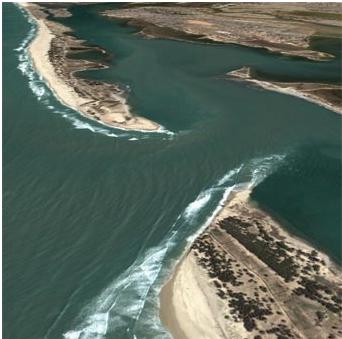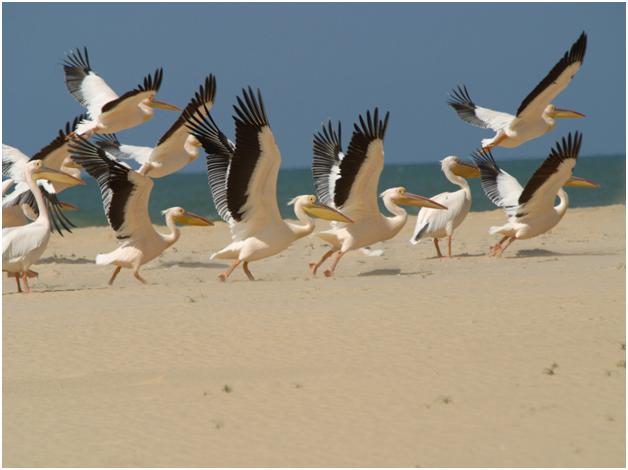Osprey Migration Update 10th June 2013

Blue YD has cleverly decided to spend his time in a good fishing spot that also happens to be a National Park near St. Louis’ coast. The 2000 ha park is called “Langue de Barbarie” and it consists of 20 km of sand dunes on a spit formed across the mouth of the Senegal river including both marine and riverine waters. There are also three islands forming part of the park with no trees but a rich flora: Beach Morning glory, Seaside Joyweed, Salt Grass, Sea Purslane, etc.
As we have mentioned in previous posts, the delta formed by the clash of the Atlantic Ocean and the Senegal river that still hosts a great variety of wildlife despite of being greatly affected by human development in the past few decades. Langue de Barbarie is famous for its large number of breeding and wintering birds: Pelicans, Audouin’s Gull, Sandwich Tern, Little Tern, Gull-billed Tern, American Flamingo and Western Reef Heron. Other animal species that have been recorded in the park are birds such as Grey-headed Gull, Slender-billed gull, Caspian Tern and Royal Tern; and reptiles such as the Green Sea Turtle, the Leatherback Sea Turtle, the Hawksbill Sea Turtle and the Loggerhead Sea Turtle.
Our osprey has been roosting on the same forested area adjacent to the sand dunes that form part of the national park for the past week, as well as doing some trips to inland waters or to the sea for hunting, enjoying lunch & siesta on the beach afterwards. The waters around his favourite perching spots are full of shrimps and fish, and locals are employed as eco-guards, driving tourists around on their old fishing boats to show them local wildlife. However, because of the widespread poverty in Senegal, a lot of villagers feel that worrying about the environment is a luxury difficult to afford, so they are forced to fish and cut down trees illegally inside the park. Because of the high volume of poachers, the park’s conservator allows limited fishing only for subsistence to relief the pressure on both families and the park’s biodiversity. And it seems the US Peace Corp has been working with local communities for several years now training villagers as ornithologists, planting trees and carrying out bird counts so they can develop an ecotourism market in the area and promote wildlife conservation.

Finally, just to let you know that tomorrow morning between 9 and 10 am we will be making a couple of tweaks to our webcams. Those of you who watched the ospreycam last year might remember a small “Join us” button in the top right hand corner. As our webcam is a free service we need to try and raise as much money as possible to keep it operational, and this small adjustment should help in this process. Please bear with us as we make the change.
Ainoa Pravia
Species Protection Officer
Help protect Scotland’s wildlife
Our work to save Scotland’s wildlife is made possible thanks to the generosity of our members and supporters.
Join today from just £3 a month to help protect the species you love.
Preface
Blue YD has cleverly decided to spend his time in a good fishing spot that also happens to be a National Park near St. Louis’ coast. The 2000 ha …
